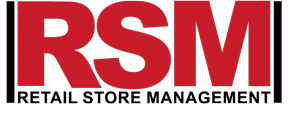
Programmatic advertising or programmatic display advertising is the automation of the buying and selling of online digital display space or online digital ad inventory.
Before the advent of programmatic display advertising, online digital display advertising inventory spots were bought, placed, and sold manually. With manual online digital display ad inventory buying and selling, the key activities were:
- The advertiser raised a Request for Proposals, requesting for the ad inventory spaces that were available for purchase.
- Auction-Type bidding for ad inventory space was carried out.
- The advertiser quoted a price range for available online ad space.
- Through negotiation, an agreed price for online ad space was reached regarding both the selling and buying of online ad spots.
However, with programmatic display advertising, the entire process is automated, making it more efficient and effective by restructuring the entire activity steps and its progression from start to finish, thus minimizing efforts and waste through the use of a single automation technology platform.
Programmatic platforms vendors like Demand Side Platform (DSP), Supply Side Platform (SSP), and Data Management Platform (DMP) enlarge their online ad inventory and database audience profiles and formats in such a way that it is now much more streamlined for all advertising channels such as desktop, tablet, mobile, audio, digital outdoor, and connected TV so that audience targeting and retargeting is now much more refined with minimal waste of ad expenditure.
With the aid of data, an advertiser’s audience is segmented and targeted with precision, thus minimizing waste by serving online ad messages to the right audience, at the right time, the right place, with the right platforms, using the right format, and in real-time. Programmatic algorithms (software) make online ad buying, placement and process optimization very effective, efficient, and ad delivery placed at the right time in the right marketplace (channel).
With programmatic software (algorithms), an Insertion Order (IO) or a purchase order (PO) is prepared and issued to a publisher, stating such request as:
- The date for online ad insertion.
- The number of insertions to be placed within a given period of time.
- The online ad format that is appropriate for each platform.
- Position of online ad placement, such as whether to place the ad at the header or bottom, left side or right side, or within the content of the display page.
An Example of a Fictional Programmatic Online ad execution process:
Samsung Electronics desires to market its latest version of the wearable smartwatch model 34H6. It hires Afromedia Plc, a programmatic advertising platform provider, which is able to streamline from its database, consumers with the following profiles:
- Names: John Michael, Jane Thomas, Tony Richards.
- Demographics: male and female between the age bracket of 20 to 40
- Social engagement: Active on Facebook, Twitter, and Instagram
- The location from Samsung electronics store: approximately 20 minutes’ drive.
- Interest: tech-savvy, subscribers of weekly online business magazines, watches CNN Quest means Business.
- Behavior: time conscious, health aficionado, jogs 3 to 4 times a week, moderate consumption of alcohol.
- Active time period: 6 am to 9 pm
- Preferred device: tablet computer, and smartphone.
As a demand-side platform provider (DSP), Afromedia Plc is now able to pull together an audience profile that fits the above characteristics. It proceeds to buy (demand) by auction-type online ad display inventory from a supply-side platform (SSP) provider an aggregation of an audience that fits Samsung smartwatch model 34H6 wearable watch profile. The aggregation takes into consideration all relevant platforms like tablets and smartphone devices and launches an advertising campaign targeting the audience (the three personas listed above) whose profiles fit the buyer persona of Samsung smartwatch model 34H6 wearable devices.
Advantages of Programmatic Display Advertising
Some of the advantages of programmatic display advertising include but are not limited to the following:
- Share of attention: this is a measure or metric of the viewability of your ad impression. Online advertising is all about the buying and selling of ad impressions (views). Programmatic display advertising uses automation and machine learning to help you make meaningful ad placement decision that measures the viewability or impression of your ad and thus minimizing waste. More impressions equal to higher viewability, which increases the chance you have of making more sales.
- Data-driven decisions: programmatic display advertising is data-driven. With precise data about your customers, you can channel your online ad messages to the right audience, at the right time, in the right places, thus increasing your share of the attention of your targeted audience.
- Ad budget: programmatic display advertising technology answers John Wanamaker's concerns as you can now get full value for your ad spend with precision targeting that takes into consideration the attribution of your audience. The measurement of your return on investment (ROI) is now more precise.
- More precise targeting: programmatic display technology makes it possible for you to be much more precise in your audience targeting, and we have already stated, it uses automation and machine learning in serving your online ads across many devices like desktop, tablets, and smartphone computers.
- Access to ad inventories: through ad exchanges, you have availed the ad inventories you need to make informed result-driven decisions, thus minimizing wasted time, efforts and cash.
In Conclusion
John Wanamaker was a pillar of marketing in the early 20th century. Perplexed at the “spray and pray” advertising methodologies of his days, he was credited with having said,
“Half the money I spend on advertising is
wasted; the trouble is I don’t know which
half.”
Were John Wanamaker alive today, the above quote attributed to him would have lost its bite, as, among other analytic tools, programmatic display advertising, which is a precise, measurable science of capturing, storing of both the demographics and psychographics of audience profile for targeting and retargeting of online ad placement would have addressed his worries. No more vague and imprecise statements like, “at our last campaign, we bought and placed 6 weekly ad spots on CNN, placed 3 banner ads on Time Inc magazine, purchased 20 radio ad spots, and our sales during the campaign period rose by 15 percent.” Or “our marketing objective was lead generation, and our expenditure of $15,000 on various channels increased our lead generation by 12 percent.” With each day, the “Spray and pray” advertisement continues on the trajectory of being dinosaur-like marketing management. Programmatic display advertising is not some exoteric, futuristic fantasy. It is real. It is with us. If you are not utilizing it, you are missing out on cost-saving, precision result-oriented advertising software that is here and now and trumps traditional “stray and pray” all-over-the-map advertising tools that John Wanamaker complained about.



